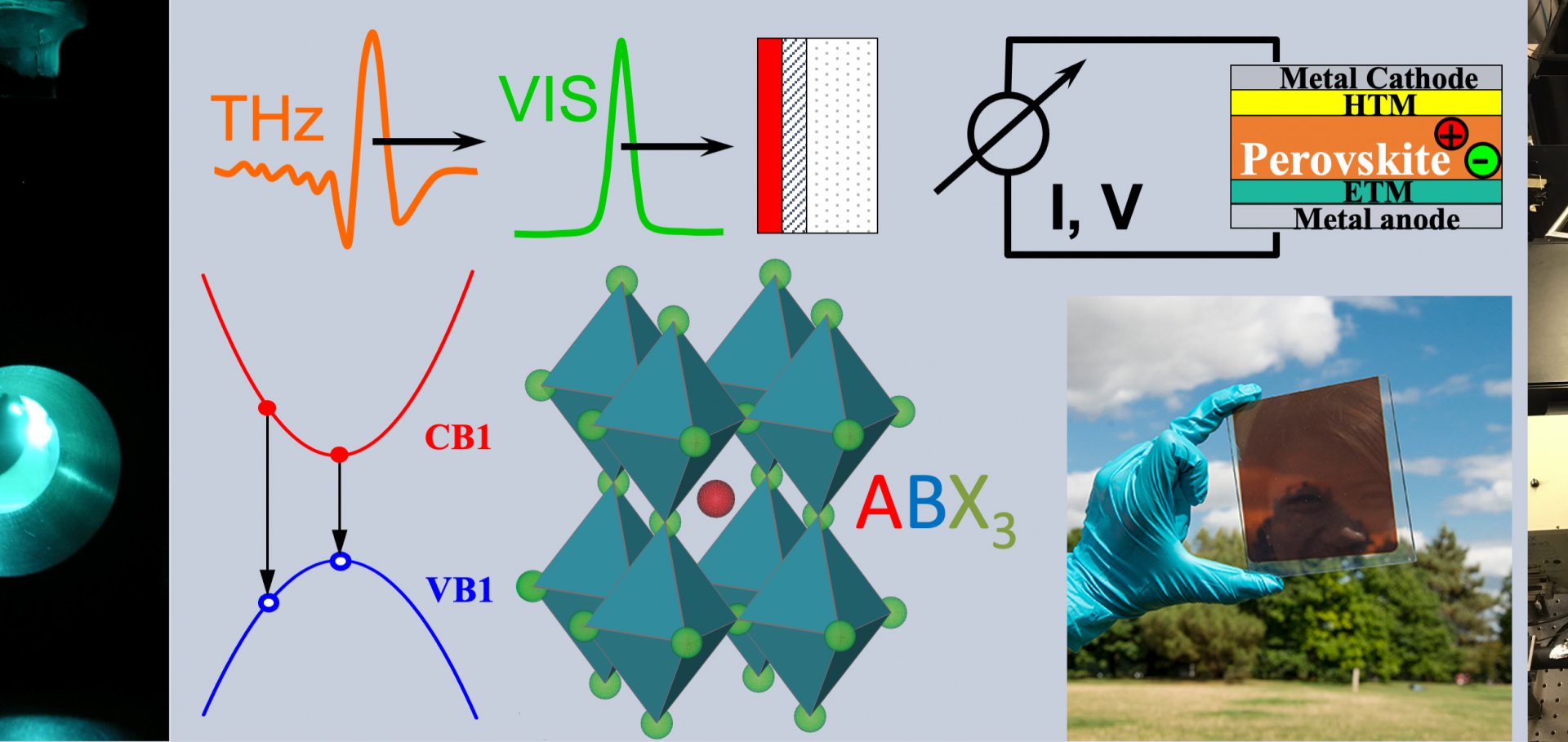Ultrafast transient terahertz conductivity of monolayer MoS₂ and WSe₂ grown by chemical vapor deposition
ACS nano American Chemical Society 8:11 (2014) 11147-11153
Abstract:
We have measured ultrafast charge carrier dynamics in monolayers and trilayers of the transition metal dichalcogenides MoS2 and WSe2 using a combination of time-resolved photoluminescence and terahertz spectroscopy. We recorded a photoconductivity and photoluminescence response time of just 350 fs from CVD-grown monolayer MoS2, and 1 ps from trilayer MoS2 and monolayer WSe2. Our results indicate the potential of these materials as high-speed optoelectronic materials.Electron mobilities approaching bulk limits in "surface-free" GaAs nanowires.
Nano letters American Chemical Society 14:10 (2014) 5989-5994
Abstract:
Achieving bulk-like charge carrier mobilities in semiconductor nanowires is a major challenge facing the development of nanowire-based electronic devices. Here we demonstrate that engineering the GaAs nanowire surface by overcoating with optimized AlGaAs shells is an effective means of obtaining exceptionally high carrier mobilities and lifetimes. We performed measurements of GaAs/AlGaAs core-shell nanowires using optical pump-terahertz probe spectroscopy: a noncontact and accurate probe of carrier transport on ultrafast time scales. The carrier lifetimes and mobilities both improved significantly with increasing AlGaAs shell thickness. Remarkably, optimized GaAs/AlGaAs core-shell nanowires exhibited electron mobilities up to 3000 cm(2) V(-1) s(-1), reaching over 65% of the electron mobility typical of high quality undoped bulk GaAs at equivalent photoexcited carrier densities. This points to the high interface quality and the very low levels of ionized impurities and lattice defects in these nanowires. The improvements in mobility were concomitant with drastic improvements in photoconductivity lifetime, reaching 1.6 ns. Comparison of photoconductivity and photoluminescence dynamics indicates that midgap GaAs surface states, and consequently surface band-bending and depletion, are effectively eliminated in these high quality heterostructures.Effect of Nanocrystalline Domains in Photovoltaic Devices with Benzodithiophene-Based Donor–Acceptor Copolymers
The Journal of Physical Chemistry C American Chemical Society (ACS) 118:31 (2014) 17351-17361
Charge carrier recombination channels in the low-temperature phase of organic-inorganic lead halide perovskite thin films
APL Materials American Institute of Physics 2:8 (2014) 081513-081513
Abstract:
The optoelectronic properties of the mixed hybrid lead halide perovskite CH3NH3PbI3-xClx have been subject to numerous recent studies related to its extraordinary capabilities as an absorber material in thin film solar cells. While the greatest part of the current research concentrates on the behavior of the perovskite at room temperature, the observed influence of phonon-coupling and excitonic effects on charge carrier dynamics suggests that low-temperature phenomena can give valuable additional insights into the underlying physics. Here, we present a temperature-dependent study of optical absorption and photoluminescence (PL) emission of vapor-deposited CH3NH3PbI3-xCl x exploring the nature of recombination channels in the room- and the low-temperature phase of the material. On cooling, we identify an up-shift of the absorption onset by about 0.1 eV at about 100 K, which is likely to correspond to the known tetragonal-to-orthorhombic transition of the pure halide CH3NH3PbI3. With further decreasing temperature, a second PL emission peak emerges in addition to the peak from the room-temperature phase. The transition on heating is found to occur at about 140 K, i.e., revealing significant hysteresis in the system. While PL decay lifetimes are found to be independent of temperature above the transition, significantly accelerated recombination is observed in the low-temperature phase. Our data suggest that small inclusions of domains adopting the room-temperature phase are responsible for this behavior rather than a spontaneous increase in the intrinsic rate constants. These observations show that even sparse lower-energy sites can have a strong impact on material performance, acting as charge recombination centres that may detrimentally affect photovoltaic performance but that may also prove useful for optoelectronic applications such as lasing by enhancing population inversion. © 2014 Author(s).Impact of Molecular Charge-Transfer States on Photocurrent Generation in Solid State Dye-Sensitized Solar Cells Employing Low-Band-Gap Dyes
The Journal of Physical Chemistry C American Chemical Society (ACS) 118:30 (2014) 16825-16830


